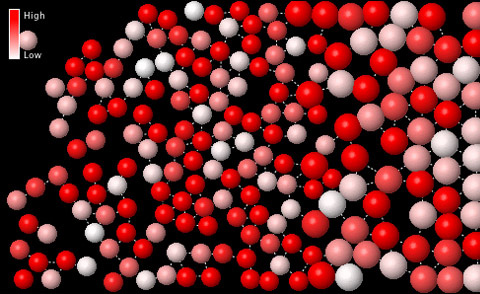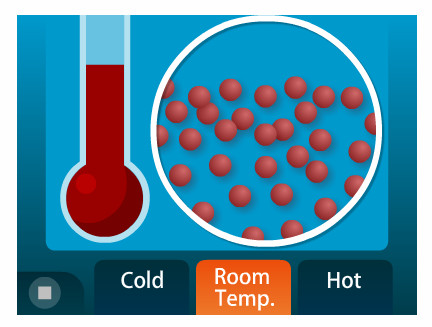 When it comes to thermal energy lessons, we are reminded of the potato chip slogan, “Nobody can eat just one.”
When it comes to thermal energy lessons, we are reminded of the potato chip slogan, “Nobody can eat just one.”
There are so many awesome thermal energy lessons on the Internet, we couldn’t pick just one! Take a moment to review the lesson plans and interactive classroom lab ideas below. We’re certain you will find something to use with your students.
If you come across any thermal energy lessons you’d like to share, please leave us a comment below!
Melting Ice
 published by the Concord Consortium, supported by the National Science Foundation
published by the Concord Consortium, supported by the National Science Foundation
This activity for grades 6-12 combines a hands-on lab with a computer simulation that allows students to investigate and graph the changing temperature of a melting ice cube. In the first step, learners use a sensor to monitor temperature as ice melts in a cup of water. In the second step, the ice cube is melted in a cup of salt water. Interactive graphs allow easy plotting of Temperature vs. Time. The activity concludes with a simulation of the atomic structure of a hot liquid and a cold liquid. Click “Withdraw the Barrier” and watch the changing kinetic energy of the cold liquid particles as they mix with the hot liquid.
Thermal Energy Transfer
 published by the Wisconsin Online Resource Center and WGBH Educational Foundation
published by the Wisconsin Online Resource Center and WGBH Educational Foundation
This interactive Flash animation for Grades 5-8 explores methods of heat transfer and provides examples from everyday life. Three methods of heat transfer are depicted: conduction, convection, and radiation. This animation provides a good starting point to help students differentiate the everyday definition of “heat” and the scientific meaning, which refers to the transfer of thermal energy from one object to another due to temperature difference. It specifically meets NGSS content standards for middle school (PS3.Aii – Definition of Energy and PS3.Biii – Energy Transfer).
.
The Ups and Downs of Thermometers
 published by the American Chemical Society, written by Patti Galvan and Jim Kessler
published by the American Chemical Society, written by Patti Galvan and Jim Kessler
This multimedia middle school chemistry lesson by the American Chemical Society takes a close look at alcohol thermometers and examines what happens on a molecular level to make the thermometer liquid go up or down. In the hands-on experiment, students apply their understanding of how molecules move in hot and cold liquids. In addition, interactive animations provide visualizations of molecules moving within a solid, liquid, and gas. In the concluding task, students construct their own molecular models of the liquid in a thermometer. Included in the lesson is a student activity sheet with answer key and suggested discussion questions.
